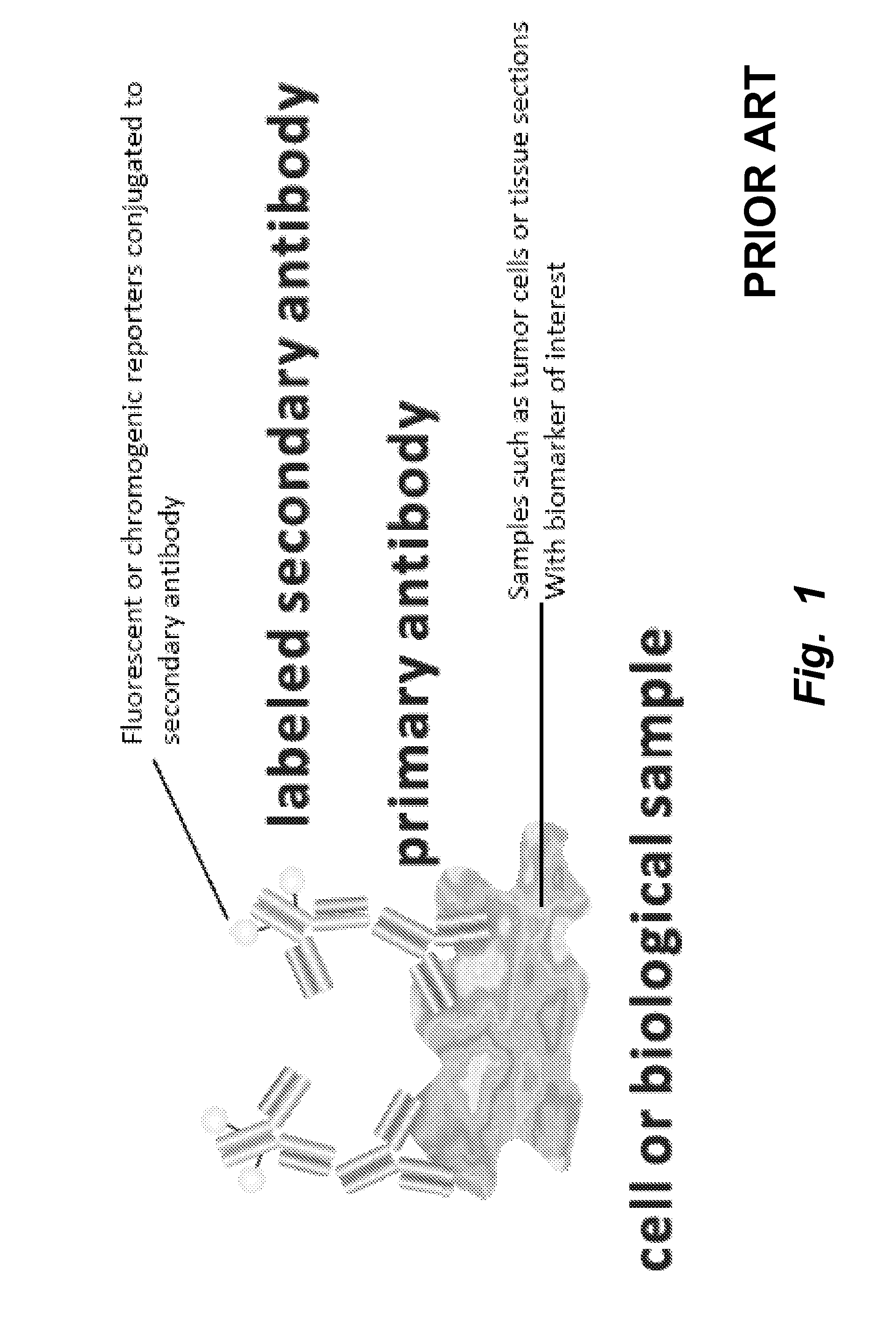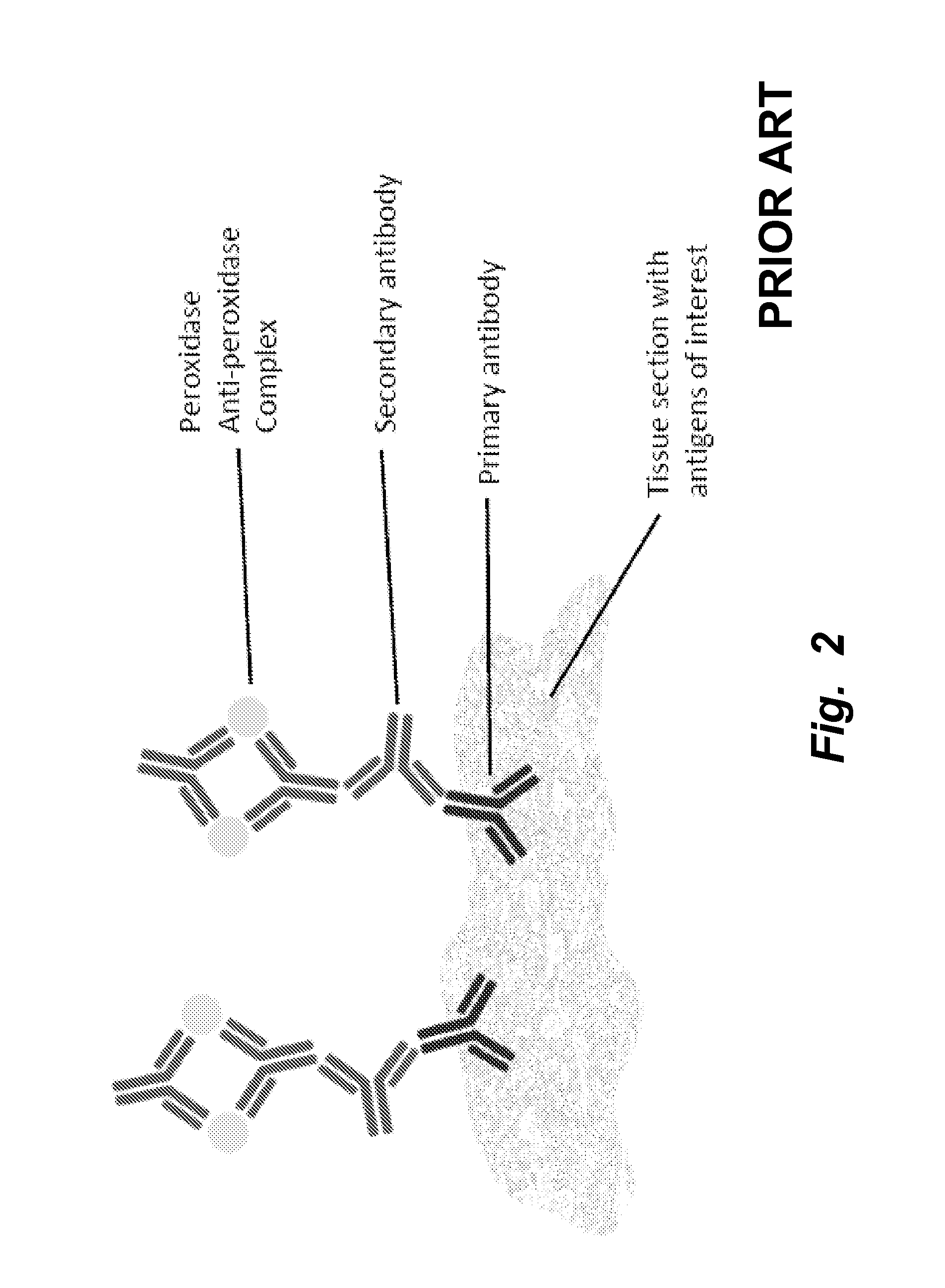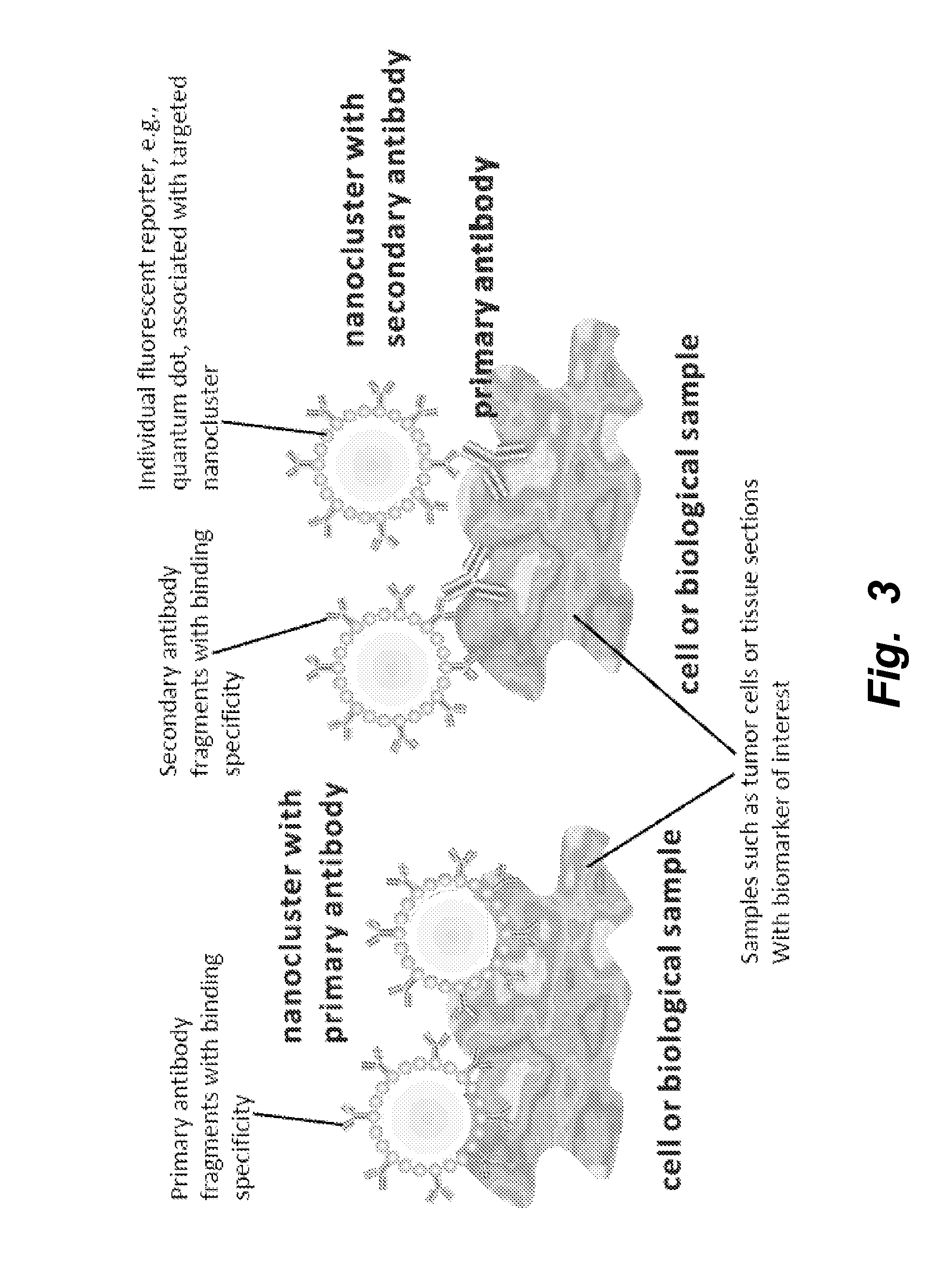Targeted nanoclusters and methods of their use
a nanocluster and nanotechnology, applied in the field of compositions and methods can solve the problems of reducing the sensitivity of detection, and reducing so as to improve the efficiency of imaging and detection, improve the sensitivity of detection, and improve the effect of sensitivity
- Summary
- Abstract
- Description
- Claims
- Application Information
AI Technical Summary
Benefits of technology
Problems solved by technology
Method used
Image
Examples
example 1
Sample Prior Art or Conventional Immunostaining
[0263]Conventional methods of immunostaining are illustrated in FIGS. 1 and 2. In the method illustrated, tissues, cells, or cell material including an antigen of interest are immobilized on a solid support, such as a glass slide, well of a multi-well plate, or the like and incubated in the presence of a primary antibody specific for the antigen of interest. After removing unbound primary antibody by washing, secondary antibody is allowed to bind to the primary antibody, followed by addition of antibody-color development reagent complexes capable of acting on a substrate to produce a detectable signal that corresponds, indirectly, to the present of the antigen of interest.
[0264]The conventional method is time-consuming, with typical processing times being about two days. Several discrete binding steps are required, e.g., for binding of primary antibody, secondary antibody, colorimetric development agents, and counterstaining. Moreover, ...
example 2
Flow Cytometry of Live Breast Tumor Cells Using Commercially Available Qdot IgG Conjugate and Targeted Nanoclusters or Nanoaggregates
[0265]Synthesis of targeted nanoclusters or nanoaggregates was achieved by incorporating reduced antibody binding fragments and luminescent quantum dots into a surface-bifunctionalized and cross-linked lipid vesicle scaffold. An illustrative protocol using the present composition and method for labeling live breast tumor cells is described.[0266]1. Take ˜70% confluent flasks of cancer cells.[0267]2. Aspirate the old medium from the flask, wash with PBS and trypsinize the cells with 0.25% trypsin-EDTA. Finally, neutralize trypsin by adding back media.[0268]3. Collect the cell suspension in a 50 ml centrifuge tube. Count the cells with hemocytometer.[0269]4. Aliquote appropriate volume of cell suspension into labeled Eppendorf tubes, typically 150,000 cells / tube.[0270]5. Spin down the cells at 400×g for 5 min, remove the supernatant and add 100 μl of 1% ...
example 3
Method and Protocol for Immunostaining FFPE Sections Using Targeted Nanoclusters or Nanoaggregates
[0281]An exemplary protocol using the present composition and method for labeling cells in formalin-fixed, paraffin-embedded sections is described. FFPE slides coated with HER2 human breast carcinoma cells were stained to visualize the erbB2 receptor as follows:
Part 1.
[0282]1. Bake slides in oven at 60° C. for 30 minutes prior to staining[0283]2. Deparaffinize and Rehydrate the tissues on slides[0284]3. Incubate with Ficin for 10 minutes at 37° C.[0285]4. Wash in PBS for 3.5 minutes three times[0286]5. Block in 3% H2O2 for 15 minutes[0287]6. Wash in PBS for 3.5 minutes three times[0288]7. Incubate with normal goat serum for 30 minutes at room temperature[0289]8. Incubate with erbB2 antibody (primary antibody)
Part 2.
[0290]9. Wash off coverslips with PBS for 8 minutes[0291]10. Wash in PBS for 3.5 minutes twice[0292]11. Incubate with goat anti-mouse targeted nanoclusters or nanoaggregates ...
PUM
| Property | Measurement | Unit |
|---|---|---|
| Length | aaaaa | aaaaa |
| Length | aaaaa | aaaaa |
| Length | aaaaa | aaaaa |
Abstract
Description
Claims
Application Information
 Login to View More
Login to View More - R&D
- Intellectual Property
- Life Sciences
- Materials
- Tech Scout
- Unparalleled Data Quality
- Higher Quality Content
- 60% Fewer Hallucinations
Browse by: Latest US Patents, China's latest patents, Technical Efficacy Thesaurus, Application Domain, Technology Topic, Popular Technical Reports.
© 2025 PatSnap. All rights reserved.Legal|Privacy policy|Modern Slavery Act Transparency Statement|Sitemap|About US| Contact US: help@patsnap.com



